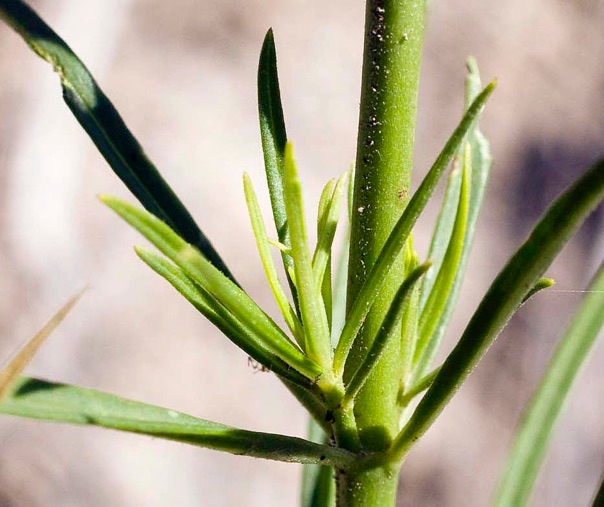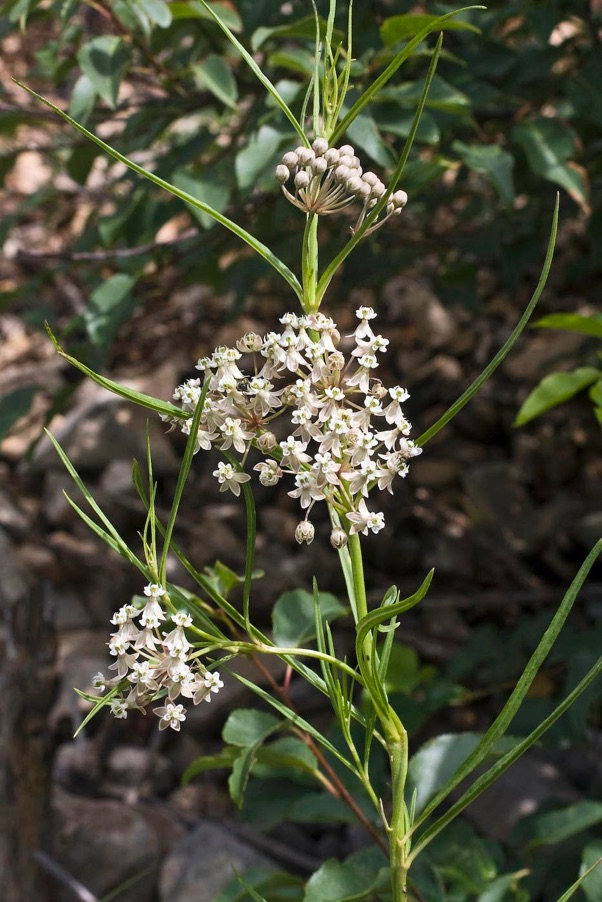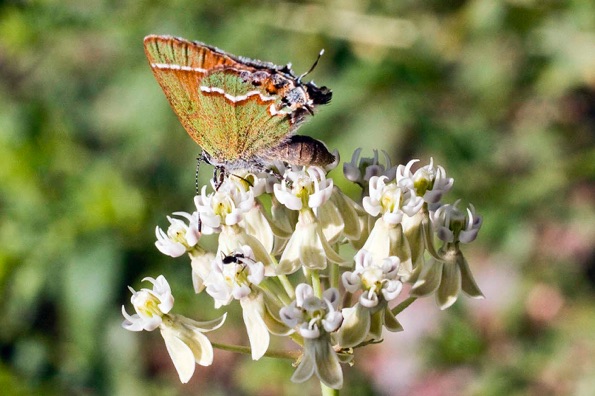WILDFLOWERS OF NEW MEXICO

Spreading by rhizomes with stems 7 3/4–40-inches tall, this milkweed has whorls of thin, linear leaves and clusters of white flowers. Note the dwarf lateral shoots in some of the leaf axils. Sap is milky. Also called Poison Milkweed because it’s toxic to livestock.
FLOWERS: May–September. Flat-topped clusters (umbels) of creamy-white to greenish flowers in the upper leaf nodes; 5 tiny petal-like lobes bend back along the stem, 5 tiny hoods are about as tall as the central column, horns that arch over the column (see photo).
LEAVES: Whorls of 3–4 leaves per node, blades 3/4–4 3/4-inches (2–12 cm) long, to 3/16-inch (1–4 mm) wide. Note the shoots of dwarf leaves in some of the axils.
HABITAT: Sandy-loam, gravelly soils, roadsides, riparian areas; grasslands, pinyon-juniper-oak woodlands.
ELEVATION: 3,100–7,800 feet.
RANGE: AZ, CO, ID, KS, NV, NM, OK, TX, UT, WY.
SIMILAR SPECIES: 32 species of milkweed in NM. Whorled Milkweed, A. verticillata, has whorls of 4–8 leaves and no leaf shoots in the axils.
NM COUNTIES: Statewide in in low- to mid-elevation, dry habitats.

HORSETAIL (POISON) MILKWEED
ASCLEPIAS SUBVERTICILLATA
Dogbane Family, Apocynaceae (formerly Milkweed Family, Asclepiadaceae)
Perennial herb
THE CONTENTS OF THIS WEBSITE ARE COPYRIGHTED AND CANNOT BE USED
WITHOUT PERMISSION OF GEORGE OXFORD MILLER




Dwarf lateral shoots in leaf axils.

-
1.Petals bent backwards against stem (lower arrow).
-
2. Hood segment of flower (middle arrow).
-
3.Horn arch over central column (upper arrow).






Milkweeds are rich nectar sources for butterflies, moths, beetles, flies, ants, and many other insects.
EMAIL ME
Seeds with silky, feathery tails disperse in the wind.